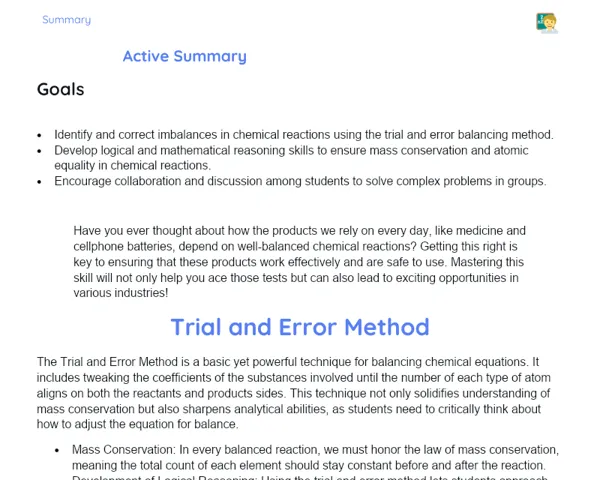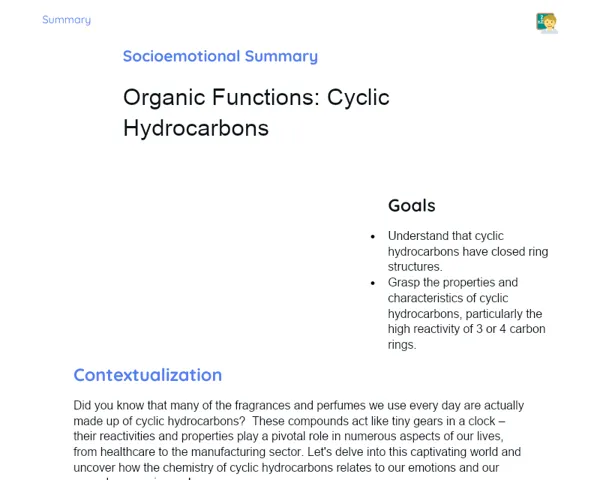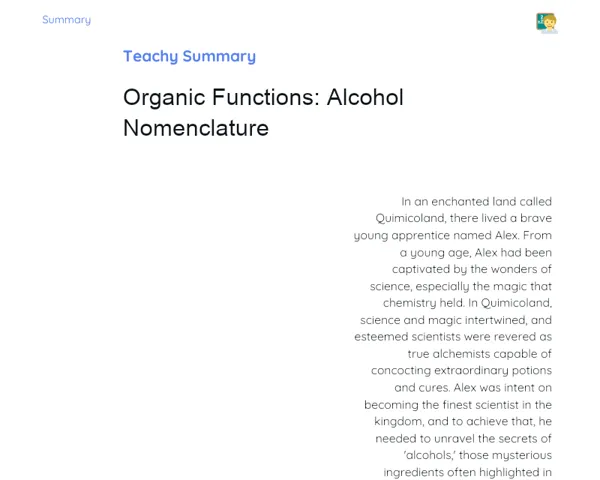Goals
1. Accurately name oxides according to their chemical formulas.
2. Enhance problem-solving skills associated with the naming of oxides.
Contextualization
Oxides are chemical compounds that consist of oxygen and another element. You can find them in various aspects of everyday life, from the rust on metal items to the carbon dioxide we breathe out. In the industry, oxides play a vital role; for instance, titanium dioxide (TiO2) is widely used in paints and sunscreens, iron oxide (Fe2O3) is essential for steel production, and silicon dioxide (SiO2) is critical in creating computer chips and electronic devices.
Subject Relevance
To Remember!
Definition and Classification of Oxides
Oxides are binary compounds composed of oxygen and another element. They can be categorized as acidic, basic, amphoteric, or neutral oxides based on how they behave chemically when reacting with water, acids, or bases.
-
Acidic Oxides: React with water to form acids or with bases to yield salts.
-
Basic Oxides: React with water to produce bases or with acids to create salts.
-
Amphoteric Oxides: Capable of reacting with both acids and bases.
-
Neutral Oxides: Do not engage in reactions with acids or bases.
Rules of Oxide Nomenclature
The naming of oxides adheres to specific rules that vary based on the element combined with oxygen. For metals, we use the suffix 'oxide' followed by the metal's name; for non-metals, Greek prefixes are applied to denote the number of oxygen atoms.
-
Metal Oxides: The metal name followed by 'oxide.' E.g., FeO is ferrous oxide.
-
Non-Metal Oxides: Greek prefixes indicate the count of oxygen. E.g., CO2 is carbon dioxide.
-
Valencies: When an element can form oxides with multiple valencies, the endings 'ous' and 'ic' are used to indicate the lower and higher valence, respectively.
Examples of Common Oxide Nomenclature
Utilising some practical examples can help clarify the application of nomenclature rules for oxides. For instance, FeO is known as ferrous oxide, while Fe2O3 is referred to as ferric oxide.
-
FeO: Ferrous Oxide, where iron exhibits a +2 valency.
-
CO2: Carbon Dioxide, consisting of two oxygen atoms.
-
SiO2: Silicon Dioxide, which is used in glass production and electronic components.
Practical Applications
-
In materials engineering, aluminium oxide (Al2O3) is utilised in making abrasives and refractory materials due to its high resistance to heat.
-
In the paint industry, titanium dioxide (TiO2) serves as a white pigment because of its excellent opacity and UV resistance.
-
In technology, zinc oxide (ZnO) is used in producing electronic components and acts as a catalyst in chemical processes.
Key Terms
-
Oxides: Binary compounds consisting of oxygen and another element.
-
Nomenclature: A set of rules for naming chemical compounds.
-
Acidic Oxides: Oxides reacting with water to form acids.
-
Basic Oxides: Oxides reacting with water to create bases.
-
Amphoteric Oxides: Oxides capable of reacting with both acids and bases.
-
Neutral Oxides: Oxides that do not react with acids or bases.
Questions for Reflections
-
How can accurate naming of oxides help avert mistakes in industrial processes?
-
What is the significance of understanding oxide classification in environmental chemistry?
-
How can the skill of naming oxides aid in the development of new technologies?
Hands-On Challenge: Delving into Oxide Nomenclature
This mini-challenge is designed to reinforce learners' understanding of oxide nomenclature through an engaging and collaborative activity.
Instructions
-
Form groups of 3 to 4 learners.
-
Each group should select or be assigned a chemical formula of an oxide (e.g., FeO, CO2, SiO2).
-
Using materials such as clay, toothpicks, and Styrofoam balls, build a 3D model that represents the molecular structure of the selected oxide.
-
Once constructed, each group should present their model to the class, explaining the chemical formula and nomenclature of their oxide.
-
Engage in discussions about the physical and chemical properties of the constructed oxides and their industrial usages.



